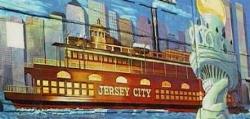 |  |  |
|
| ||
 |  |  |
 |  |  |
|
| ||
 |  |  |
|
|
In 1655, an Indian girl stole some peaches from a farm near the present site of Trinity Church, New York, and was shot, by the farmer. On the night of September 15th, 1655, five hundred Indians made a night attack upon New Amsterdam, being repulsed, they crossed, the river and set fire to every house in Pavonia. Twenty-eight farms and outlying plantations with crops and buildings were all destroyed. Of the settlers one hundred were killed, one hundred and, fifty were taken prisoners and three hundred were left homeless. For five years the settlements were practically abandoned. According to the Indian laws the title to the lands was again vested in them by right of conquest. In 1658 the Indians made a new, deed of the territory to the Dutch. The former settlers who were about to return to their farms asked for exemption from taxes that they might be able to put their farms in order. The petition was granted on condition of their building a fortified village. In February, 1660, a decree was issued ordering all farmers, to move their houses into groups, that might be protected by palisades or stockades, from six to seven feet above the ground. Indian stockades always were of tree trunks, as are those of the Hudson Bay Company to this day. Probably the early Dutch were also, although the later stockades may have been of heavy plank.
|
|
|
|
 Your Ancestors' Story |
 Bruce Springsteen's Jersey Shore Rock Haven! |

|
UrbanTimes.com |